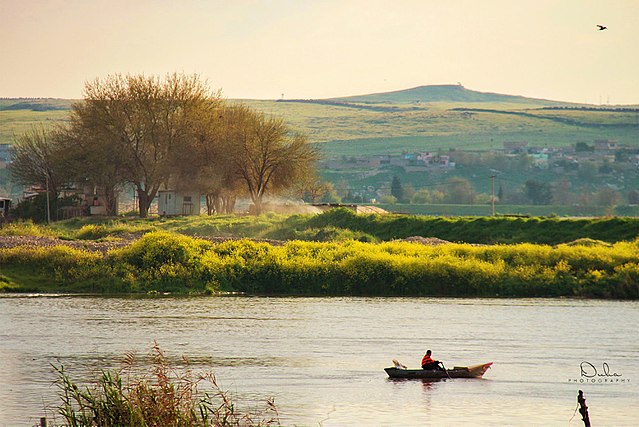
Why was Mesopotamia the cradle of civilization? Because its climate slowly changed and the people had to learn to cope with it.
Mesopotamia was located where Iran, Kuwait, Syria, and Turkey are today. People started living in the region in about 10,000 BC. They were called the Sumerians and the Akkadians. They began to group into settlements, then villages, and then cities. The first cities in the world were located in Mesopotamia. By about 5000 BC, the cities of Eridu, Uruk, and Ur had been founded. Mesopotamia lasted until Babylon fell in 539 BC and was captured by Cyrus the Great. Mesopotamia became part of the Persian Empire.
During the thousands of years that it existed, many different things were invented in Mesopotamia. They came up with the wheel, mass-produced ceramics, mathematics, time, writing, seals, mass-produced bricks, cities, maps, and sails. They had the first schools, the first historian, the first tax system, and many other firsts as well. Many of the religious stories that were used in the Bible were written down first in Mesopotamia.
So, why did all of this happen in Mesopotamia and not somewhere else? It all began with the Neolithic Revolution. Humans were hunter-gatherers until they decided that it made more sense to cultivate crops. This shift from one way of living to the other is known as the Neolithic Revolution and it appears to have started in the area that became Mesopotamia. Around about 14,000 years ago, the Earth came out of its last Ice Age. Carbon dioxide had built up in the atmosphere to such an extent that the climate started to warm. The ice sheets began to melt and sea levels rose. This warmer climate was conducive to plant and animal growth. The area where Mesopotamia formed became known as the Fertile Crescent. It was between the Mediterranean Sea and the Persian Gulf. The lands were fertile and wild wheat and barley began to grow there. The warmer climate brought more rainfall and there were fertile swamps all around the area. Crops grew freely and easily.
In the beginning, people ate the wild crops, but, approximately 10,000 years ago, they realized that they could have more control and freedom if they grew the crops themselves. So, that is what they did. And they did it in the Fertile Crescent. They started to selectively breed for different kinds of crops, and they became farmers. Hunter-gatherers have to move around to find their food, but farmers need to stay where their crops are so that they can tend them. And once one farm was settled, it made sense that other people would settle close by. This brought trade because one person couldn’t grow every crop, but a village of people could grow enough different crops for everyone. The settlements slowly began to grow. Mesopotamia was in the perfect spot for large groups of people to form because there was plenty of food. They started by farming wheat and barley, but they also began to cultivate vegetables, fruit, and soon domesticated animals.
So, why did Mesopotamia go from being the Fertile Crescent to the cradle of civilization? Because the weather stopped being good to them. The Fertile Crescent was fed by rain and made fertile by regular river flooding and patterns. From about 4000 BC, the climate started to change again. There were periods of great drought and the land dried out. There is evidence of wind-blown dust and sand. The rivers didn’t flood as regularly, the marshes dried up, and the land became less fertile. There was a large population living in the area by now that still had to be fed, so the Mesopotamians started to work out solutions to their problems. They worked out how to irrigate their land and raise crops in drier conditions, but large-scale irrigation projects required people to work together and cooperate. To work together on large projects, they had to be organized and this led to the development of government and bureaucracy. From this came the need for an educated class, and that brought schools, mathematics, and ultimately writing. They needed to move from a purely agricultural society to a trading society and that need pushed the growth of their civilization. Mesopotamia is called the cradle of civilization because so much that other civilizations would rely upon began here, and it might not have started if the climate hadn’t turned for the worse.
By Duha masood – Own work, CC BY-SA 4.0, https://commons.wikimedia.org/w/index.php?curid=62501691
Sources
https://www.worldhistory.org/article/1859/mesopotamian-inventions/
https://education.nationalgeographic.org/resource/history-cities/
https://en.wikipedia.org/wiki/Mesopotamia
https://www.history.com/topics/pre-history/neolithic-revolution
https://www.history.com/news/how-mesopotamia-became-the-cradle-of-civilization

[…] ago, they started to build their own houses, but mostly used wood and animal hides. During the Neolithic Revolution, possibly in about 8000 BC, people learned how to make quicklime, plaster, and mortar. They learned […]